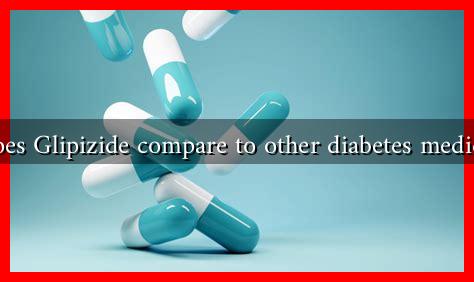-
Table of Contents
How Does Glipizide Compare to Other Diabetes Medications?
Diabetes management is a complex process that often requires a combination of lifestyle changes and medication. Among the various medications available, Glipizide is a popular choice for treating Type 2 diabetes. This article explores how Glipizide compares to other diabetes medications, examining its mechanism of action, effectiveness, side effects, and overall patient experience.
Understanding Glipizide
Glipizide belongs to a class of medications known as sulfonylureas. It works by stimulating the pancreas to release more insulin, which helps lower blood sugar levels. Glipizide is typically prescribed for patients who have not achieved adequate blood sugar control through diet and exercise alone.
Comparison with Other Diabetes Medications
When considering diabetes medications, it is essential to understand how Glipizide stacks up against other common treatments. Here, we will compare Glipizide with three major classes of diabetes medications: Metformin, DPP-4 inhibitors, and GLP-1 receptor agonists.
1. Glipizide vs. Metformin
Metformin is often the first-line treatment for Type 2 diabetes. It works primarily by decreasing glucose production in the liver and improving insulin sensitivity. Here are some key points of comparison:
- Effectiveness: Metformin is generally more effective at lowering A1C levels than Glipizide, especially in the early stages of diabetes.
- Weight Impact: Metformin is associated with weight loss or weight neutrality, while Glipizide may lead to weight gain due to increased insulin levels.
- Side Effects: Metformin can cause gastrointestinal issues, whereas Glipizide may lead to hypoglycemia (low blood sugar) if not monitored closely.
2. Glipizide vs. DPP-4 Inhibitors
DPP-4 inhibitors, such as Sitagliptin and Saxagliptin, work by increasing incretin levels, which help regulate insulin and glucagon. Here’s how they compare:
- Mechanism: While Glipizide stimulates insulin release, DPP-4 inhibitors enhance the body’s natural response to glucose.
- Side Effects: DPP-4 inhibitors have a lower risk of hypoglycemia compared to Glipizide, making them a safer option for some patients.
- Weight Management: Both medications are generally weight-neutral, but DPP-4 inhibitors do not cause weight gain.
3. Glipizide vs. GLP-1 Receptor Agonists
GLP-1 receptor agonists, such as Liraglutide and Semaglutide, mimic the incretin hormone, promoting insulin secretion and reducing appetite. Here’s how they differ:
- Weight Loss: GLP-1 receptor agonists are associated with significant weight loss, while Glipizide may lead to weight gain.
- Administration: Glipizide is taken orally, while GLP-1 agonists are typically administered via injection, which may be a consideration for some patients.
- Cardiovascular Benefits: Some GLP-1 receptor agonists have shown cardiovascular benefits, which Glipizide does not provide.
Case Studies and Statistics
Research indicates that the choice of diabetes medication can significantly impact patient outcomes. A study published in the Journal of Diabetes Research found that patients on Metformin had a 30% lower risk of cardiovascular events compared to those on Glipizide. Additionally, a meta-analysis revealed that GLP-1 receptor agonists could reduce A1C levels by 1.5% on average, compared to 0.5% for Glipizide.
Conclusion
In summary, Glipizide is an effective medication for managing Type 2 diabetes, particularly for patients who require additional insulin stimulation. However, it is essential to consider its limitations, such as the potential for weight gain and hypoglycemia. When compared to other diabetes medications like Metformin, DPP-4 inhibitors, and GLP-1 receptor agonists, Glipizide may not always be the best choice for every patient. Ultimately, the decision should be based on individual patient needs, preferences, and medical history. Consulting with a healthcare provider is crucial for determining the most appropriate treatment plan.



